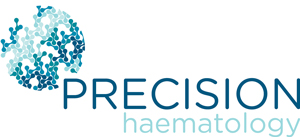Chemotherapy literally means therapy with chemicals. Many chemotherapy drugs are also called cytotoxics (cell toxic) because they kill cells, especially ones that multiply quickly like cancer cells. Chemotherapy often involves a combination of drugs (combination chemotherapy). These drugs act together and in different ways to destroy the blood cancer cells. Chemotherapy is usually given in several cycles (or courses) with a rest period of a few weeks between each cycle. This is to allow the body to recover from the side-effects of the treatment.
Side-effects of chemotherapy
Chemotherapy kills cells that multiply quickly, such as cancer cells. It also causes damage to fast-growing normal cells, including hair cells and cells that make up the tissues in your mouth, gut, bone marrow and reproductive organs. The side-effects of chemotherapy occur as a result of this damage.
The type of side-effects and their severity varies from person to person, depending on the type of chemotherapy used and how an individual responds to it.
There is no doubt that side-effects can be very unpleasant at times but it’s good to remember that most of them are temporary and reversible. It is important that you report any side-effects you are experiencing to your nurse or doctor because many of them can be managed successfully, reducing any unnecessary discomfort for you.
Effects on the bone marrow
Blood Cancers prevent your bone marrow from functioning properly and producing adequate numbers of red blood cells, normal white blood cells and platelets. Chemotherapy also affects the bone marrow’s ability to produce adequate numbers of blood cells. As a result, your blood count (the number of white cells, platelets and red cells circulating in your blood) will generally fall within a week of treatment. The length of time it takes for your bone marrow and blood counts to recover mainly depends on the type of chemotherapy given.
Platelets
Your platelet count may also be affected by your disease and by the chemotherapy you are receiving and you may become thrombocytopenic (a reduction in the number of platelets circulating in the blood). When your platelet count is very low you can bruise and bleed more easily. During this time it is helpful to avoid sharp objects in your mouth such as chop bones or potato chips as these can cut your gums. Using a soft toothbrush also helps to protect your gums. In many cases a transfusion of platelets is given to reduce the risk of bleeding until the platelet count recovers.
Red cells
If your red blood cell count and haemoglobin levels drop below normal, you will be anaemic. When you are anaemic you feel more tired and lethargic than usual, and may easily become short of breath. If your haemoglobin level is very low, your doctor may prescribe a blood transfusion.
White cells
The point at which your white blood cell count is at its lowest is called the nadir. This is usually expected 10 to 14 days after having your chemotherapy. During this time you will be at a higher risk of developing an infection. At this stage you will also be neutropenic, which means that your neutrophil count is low. Neutrophils are important white blood cells that help us to fight infection. While your white blood cell count is low you should take sensible precautions to help prevent infection. These include avoiding crowds, avoiding close contact with people with infections that are contagious (for example colds, flu, chicken pox) and only eating food that has been properly prepared and cooked.
Your doctor and nurse will advise you on how to reduce your risk of infection while your white cell count is low. If you do develop an infection you may experience a fever, which may or may not be accompanied by an episode of shivering where you shake uncontrollably. Infections while you are neutropenic can be quite serious and need to be treated with antibiotics as soon as possible.

